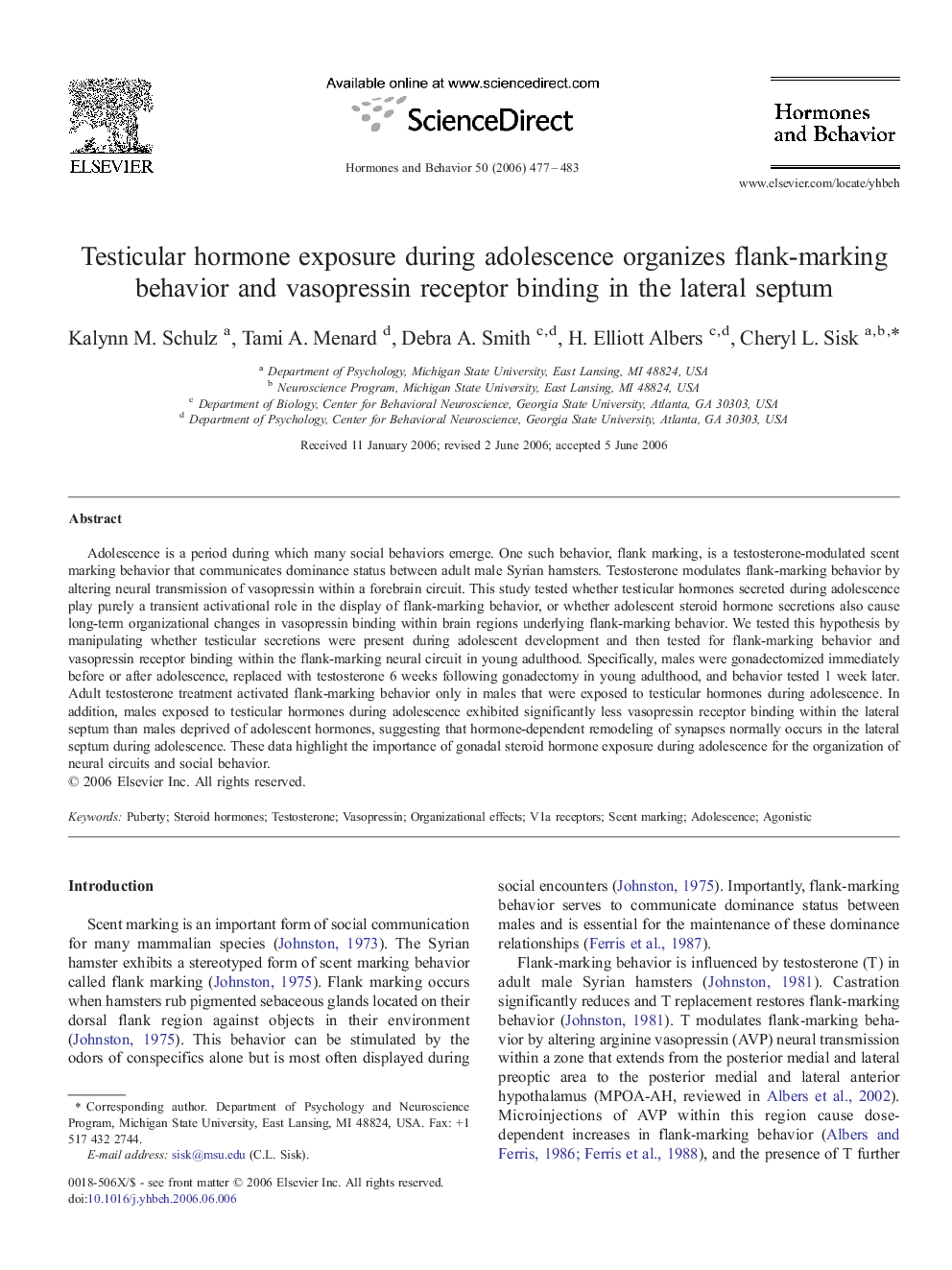| Article ID | Journal | Published Year | Pages | File Type |
|---|---|---|---|---|
| 323908 | Hormones and Behavior | 2006 | 7 Pages |
Adolescence is a period during which many social behaviors emerge. One such behavior, flank marking, is a testosterone-modulated scent marking behavior that communicates dominance status between adult male Syrian hamsters. Testosterone modulates flank-marking behavior by altering neural transmission of vasopressin within a forebrain circuit. This study tested whether testicular hormones secreted during adolescence play purely a transient activational role in the display of flank-marking behavior, or whether adolescent steroid hormone secretions also cause long-term organizational changes in vasopressin binding within brain regions underlying flank-marking behavior. We tested this hypothesis by manipulating whether testicular secretions were present during adolescent development and then tested for flank-marking behavior and vasopressin receptor binding within the flank-marking neural circuit in young adulthood. Specifically, males were gonadectomized immediately before or after adolescence, replaced with testosterone 6 weeks following gonadectomy in young adulthood, and behavior tested 1 week later. Adult testosterone treatment activated flank-marking behavior only in males that were exposed to testicular hormones during adolescence. In addition, males exposed to testicular hormones during adolescence exhibited significantly less vasopressin receptor binding within the lateral septum than males deprived of adolescent hormones, suggesting that hormone-dependent remodeling of synapses normally occurs in the lateral septum during adolescence. These data highlight the importance of gonadal steroid hormone exposure during adolescence for the organization of neural circuits and social behavior.
